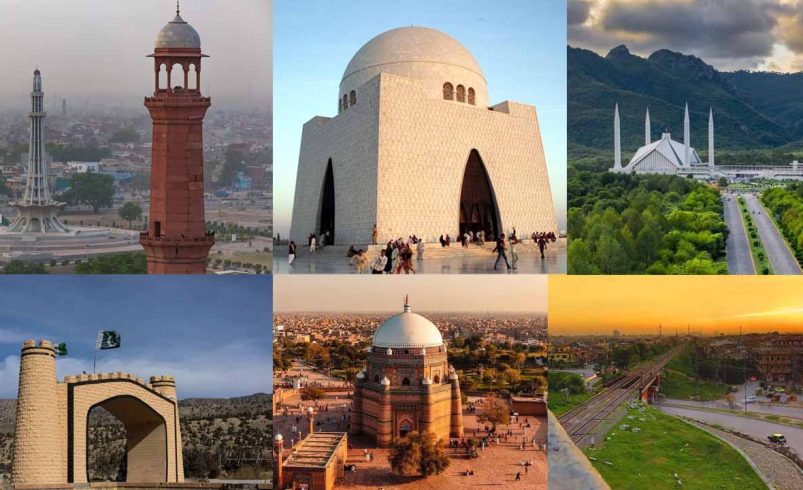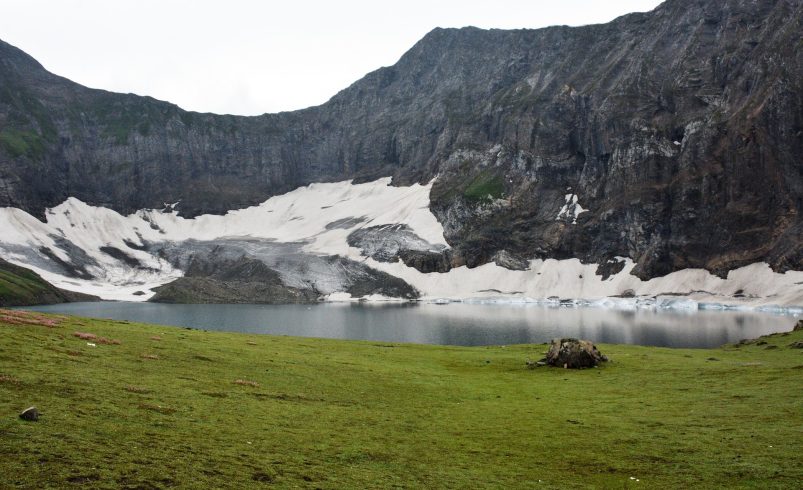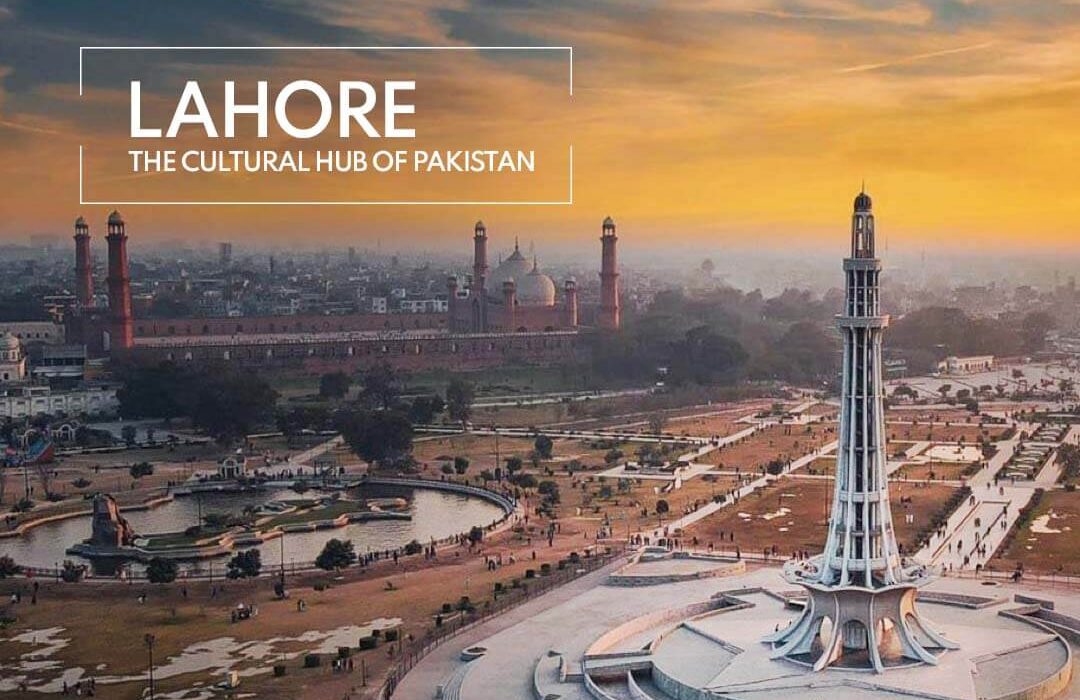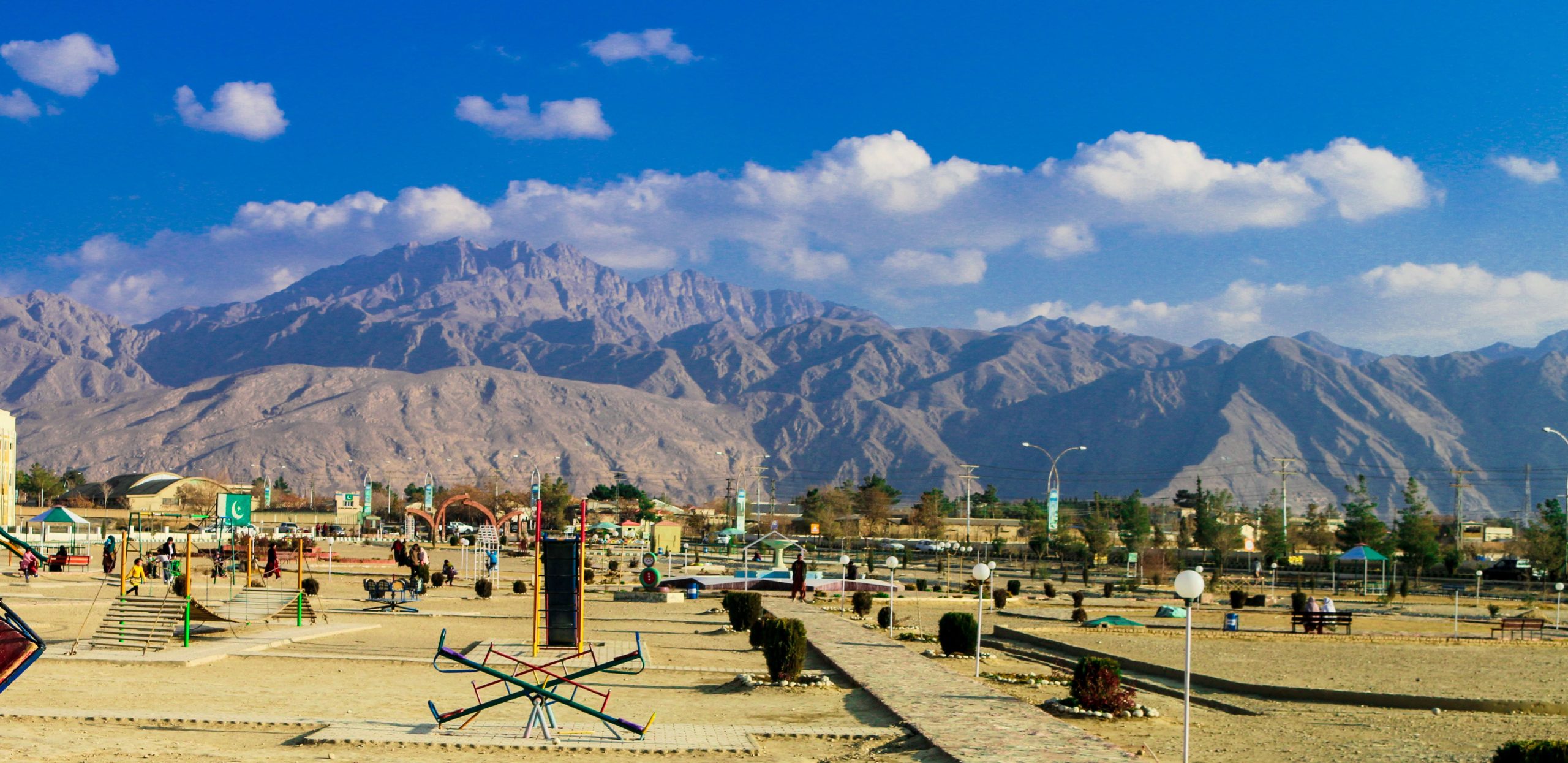
- March 26, 2025
Introduction
Pakistan is home to some of the most beautiful cities in South Asia, offering a diverse mix of history, culture, and natural landscapes. Whether you’re interested in historical landmarks, bustling metropolitan hubs, or scenic mountain towns, Pakistan has it all. Here’s a list of the best cities to visit in Pakistan for an unforgettable experience.
Lahore
Located in Punjab, Lahore is the cultural heart of Pakistan and a treasure trove of historical sites.
- Location: Punjab province, nearest major city: Islamabad (375 km)
- Nearby Places: Wagah Border (24 km), Sheikhupura Fort (40 km)
- Key Attractions: Badshahi Mosque, Lahore Fort, Shalimar Gardens, Walled City
- Cultural Significance: Known as the “City of Gardens,” Lahore has been a center of Mughal and Sikh heritage.
Islamabad
Pakistan’s capital city, Islamabad, is famous for its modern infrastructure and natural beauty.
- Location: Islamabad Capital Territory
- Nearby Places: Murree (60 km), Taxila (35 km)
- Key Attractions: Faisal Mosque, Daman-e-Koh, Margalla Hills, Lok Virsa Museum
- Cultural Significance: A well-planned city with a blend of modernity and tradition.
Karachi
As Pakistan’s largest city, Karachi is a vibrant hub of business, culture, and history.
- Location: Sindh province
- Nearby Places: Keenjhar Lake (120 km), Makli Necropolis (100 km)
- Key Attractions: Clifton Beach, Quaid-e-Azam Mausoleum, Pakistan Maritime Museum
- Cultural Significance: A melting pot of cultures and home to Pakistan’s largest port.
Hunza
A mountain paradise, Hunza Valley is known for its stunning landscapes and friendly locals.
- Location: Gilgit-Baltistan
- Nearby Places: Attabad Lake (30 km), Passu Cones (50 km)
- Key Attractions: Baltit Fort, Eagle’s Nest, Altit Fort
- Cultural Significance: Famous for its unique Burusho culture and traditions.
Skardu
Skardu is a gateway to some of the world’s highest peaks and a haven for trekkers.
- Location: Gilgit-Baltistan
- Nearby Places: Shigar Valley (32 km), Deosai Plains (50 km)
- Key Attractions: Shangrila Resort, Satpara Lake, Kharpocho Fort
- Cultural Significance: A mix of Tibetan and Balti heritage.
Murree
Murree is a popular hill station, perfect for summer getaways and winter snowfall.
- Location: Punjab province
- Nearby Places: Patriata (20 km), Ayubia (40 km)
- Key Attractions: Mall Road, Pindi Point, Kashmir Point
- Cultural Significance: Once a British colonial retreat.
Swat
Often referred to as the “Switzerland of Pakistan,” Swat Valley is a breathtaking destination with lush green valleys, rivers, and rich cultural heritage.
- Location: Khyber Pakhtunkhwa province, nearest major city: Peshawar (160 km)
- Nearby Places: Malam Jabba (40 km), Mingora (10 km)
- Key Attractions: Malam Jabba Ski Resort, Mingora, Fizagat Park, Mahodand Lake, Bahrain
- Cultural Significance: Home to ancient Buddhist relics and the famous Butkara Stupa.
Peshawar
One of the oldest cities in South Asia, Peshawar is a gateway to the historic Khyber Pass and a center of Pashtun culture.
- Location: Khyber Pakhtunkhwa province
- Nearby Places: Khyber Pass (30 km), Jamrud Fort (25 km)
- Key Attractions: Qissa Khwani Bazaar, Bala Hisar Fort, Peshawar Museum, Mahabat Khan Mosque
- Cultural Significance: A hub of Pashtun traditions, famous for its bazaars, chapli kebabs, and historical forts.
Quetta
The “Fruit Garden of Pakistan”, Quetta is known for its natural beauty, dry fruits, and historical sites.
- Location: Balochistan province
- Nearby Places: Hanna Lake (14 km), Ziarat (133 km)
- Key Attractions: Hanna Lake, Hazarganji-Chiltan National Park, Quaid-e-Azam Residency
- Cultural Significance: A blend of Balochi, Pashtun, and Hazara cultures.
Multan
Known as the “City of Saints“, Multan is famous for its Sufi shrines, bazaars, and historical sites.
- Location: Punjab province
- Nearby Places: Bahawalpur (100 km), Uch Sharif (75 km)
- Key Attractions: Shrine of Bahauddin Zakariya, Multan Fort, Shah Rukn-e-Alam Tomb
- Cultural Significance: One of the oldest cities in South Asia, renowned for Sufism.
Bahawalpur
A royal city, Bahawalpur is home to stunning palaces, deserts, and historical sites.
- Location: Punjab province
- Nearby Places: Lal Suhanra National Park (35 km), Derawar Fort (100 km)
- Key Attractions: Noor Mahal, Darbar Mahal, Derawar Fort, Uch Sharif
- Cultural Significance: Once the seat of the Bahawalpur princely state, reflecting Mughal and British influences.
Muzaffarabad
The capital of Azad Jammu and Kashmir, Muzaffarabad offers breathtaking landscapes and historical sites.
- Location: Azad Jammu & Kashmir
- Nearby Places: Neelum Valley (40 km), Pir Chinasi (30 km)
- Key Attractions: Red Fort, Pir Chinasi, Neelum Valley
- Cultural Significance: A blend of Kashmiri traditions and scenic beauty.
Gilgit
A gateway to the majestic Karakoram mountains, Gilgit is a paradise for adventure lovers.
- Location: Gilgit-Baltistan
- Nearby Places: Hunza (100 km), Naltar Valley (34 km)
- Key Attractions: Naltar Valley, Rakaposhi Viewpoint, Kargah Buddha
- Cultural Significance: A melting pot of Shina, Burushaski, and Wakhi cultures.
Abbottabad
A serene hill town, Abbottabad is known for its cool climate, lush greenery, and colonial-era charm.
- Location: Khyber Pakhtunkhwa province
- Nearby Places: Nathia Gali (40 km), Thandiani (25 km)
- Key Attractions: Harnoi Lake, Shimla Hill, Ilyasi Mosque
- Cultural Significance: A key British colonial military post, now an educational and tourist hub.
Chitral
A remote yet mesmerizing valley, Chitral is home to the unique Kalash tribe and breathtaking landscapes.
- Location: Khyber Pakhtunkhwa province
- Nearby Places: Kalash Valley (30 km), Shandur Pass (150 km)
- Key Attractions: Chitral Fort, Kalash Valley, Garam Chashma, Shandur Pass
- Cultural Significance: Known for its indigenous Kalash culture, distinct from the rest of Pakistan.
Travel Packing Checklist
- Passport & Visa
- Warm clothing for northern areas
- Comfortable walking shoes
- Power bank & charger
- First-aid kit
- Local currency & credit cards
Emergency Contacts & Health Precautions
- Police: 15
- Rescue Services: 1122
- Hospitals: PIMS (Islamabad), Mayo Hospital (Lahore), Aga Khan Hospital (Karachi)
- Precautions: Carry water purification tablets, use mosquito repellent, and follow COVID-19 safety measures.
Travel Tips
- Plan your trip according to weather conditions.
- Book hotels in advance, especially in peak seasons.
- Use ride-hailing apps like Uber and Careem.
- Learn a few basic Urdu phrases for easy communication.
- Respect local customs and dress modestly in religious sites.
FAQs
1. What is the best time to visit Swat?
Swat is best visited in spring (March to May) and summer (June to August) when the valley is in full bloom. However, winter (December to February) is ideal for those looking to enjoy snowfall in Malam Jabba.
2. How can I reach Peshawar from Islamabad?
You can travel to Peshawar from Islamabad via the M-1 Motorway (2-hour drive). Alternatively, Pakistan Railways and Daewoo Express provide comfortable train and bus services.
3. What are the must-visit attractions in Quetta?
Some of the top places to visit in Quetta include Hanna Lake, Hazarganji-Chiltan National Park, Quetta Museum, and the Quaid-e-Azam Residency in Ziarat.
4. Is Multan worth visiting for history lovers?
Absolutely! Multan is one of the oldest cities in South Asia, famous for its Sufi shrines, historical forts, and vibrant bazaars.
5. What makes Bahawalpur special?
Bahawalpur is known for its stunning palaces, historical forts, and the majestic Cholistan Desert. Highlights include Noor Mahal, Derawar Fort, and Lal Suhanra National Park.
6. Is Muzaffarabad a good base for exploring Azad Kashmir?
Yes, Muzaffarabad is a great starting point for exploring Neelum Valley, Pir Chinasi, and the surrounding scenic landscapes.
7. What is the best way to travel to Gilgit?
The most convenient way to reach Gilgit is by taking a flight from Islamabad (1-hour journey). Alternatively, the Karakoram Highway (KKH) offers a scenic but long road trip (15-18 hours).
8. What is the weather like in Abbottabad?
Abbottabad has a pleasant climate throughout the year, with cool summers and mildly cold winters, making it an ideal destination for tourists.
9. Why is Chitral famous?
Chitral is renowned for its breathtaking landscapes, the unique Kalash culture, and adventure activities like trekking and mountaineering.
10. Can I experience snowfall in Swat and Malam Jabba?
Yes, Swat and Malam Jabba receive heavy snowfall between December and February, making them popular destinations for snow lovers and skiers.
11. What is the cultural significance of Peshawar?
Peshawar is one of the oldest cities in Asia, famous for its Pashtun heritage, historic Qissa Khwani Bazaar, and centuries-old Bala Hisar Fort.
12. Is Quetta safe for tourists?
Yes, Quetta is generally safe for travelers. However, it’s recommended to stay updated on travel advisories and follow local guidelines.
13. What should I eat in Multan?
Multan is famous for its Sohan Halwa, Multani Chana, and delicious street food like kebabs and tandoori dishes.
14. Are there luxury hotels in Bahawalpur?
Yes, Bahawalpur has several luxury accommodations, including Seraiki Hotel, Hotel One Bahawalpur, and The Grand Regency Hotel.
15. What adventure activities can I do in Muzaffarabad?
You can enjoy hiking, river rafting in Neelum Valley, and paragliding at Pir Chinasi.
16. What is the best trekking route in Gilgit?
One of the most famous trekking routes is the Fairy Meadows Trek leading to Nanga Parbat Base Camp.
17. How far is Abbottabad from Islamabad?
Abbottabad is about 120 km from Islamabad, and it takes approximately 2.5 to 3 hours by road.
18. What is the highlight of Chitral’s Kalash Valley?
The Kalash Valley Festivals (Chilam Joshi, Uchal, and Choimus) showcase the vibrant traditions and culture of the indigenous Kalash people.
19. Can I find budget-friendly accommodation in these cities?
Yes, all these cities offer budget-friendly hotels and guesthouses, along with luxury resorts for a more comfortable stay.
20. What is the best way to explore Pakistan’s tourist cities?
The best way to explore is by renting a car, taking domestic flights for long distances, or using intercity buses like Daewoo, Faisal Movers, or Skyways.
Conclusion
Pakistan is a treasure trove of diverse experiences, offering a mix of historical grandeur, cultural vibrance, and natural beauty. Whether you explore the bustling streets of Lahore, the scenic valleys of Hunza, or the coastal charm of Karachi, each city has its own unique charm. With this guide, you can plan an unforgettable journey to the best cities to visit in Pakistan and experience the country’s rich heritage and warm hospitality.






